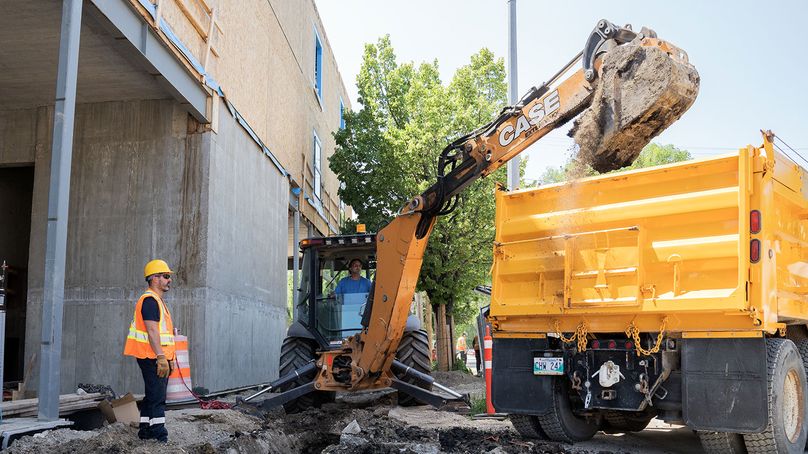You can’t plop a building down anywhere — it needs power and natural gas and that takes planning ahead. That’s why Manitoba Hydro Energy Service Advisors (ESAs) like Justin Morris collaborate with developers to get new buildings power.
Justin has been working with Adam Sharfe, owner of Sharfe Developments, on a new build in Osborne Village — Osborne Terraces, Adam’s fourth building project with Manitoba Hydro. His team is deep into construction of the structure, located at the corner of Gertrude Avenue and Osborne Street.
“As a developer, going through the whole process, there are a lot of challenges that come up along the way,” said Adam. “So it’s nice having somebody that’s truly helping you move it along with a lot of great ideas and doing everything they can.
“Right from day one, Hydro has jumped in.”

Adam Sharfe at his latest project, Osborne Terraces
Enlarge image: Owner of Sharfe Developments in his new building in progress.
The end-product, to be completed in August 2024, will be a six-storey mixed-use building with 90 residential units and seven commercial spaces on ground level. As reported in the Winnipeg Free Press, 14 of the residential units will be affordable living options as defined by the Canadian Mortgage and Housing Corporation (CMHC).
“I like this work,” said Scott Wilkinson, one of the supervisors on site. “We get a good variety — we get to install cable and do the construction aspect like this as well with the duct lines.”
Initial excavation work under Osborne Street was done by Manitoba Hydro in two stages. In the fall, workers core-drilled out of the manhole in the middle of Osborne and buried six pipes (called a duct bank). In the summer, we came back to attach six more pipes onto those ones along the property line.
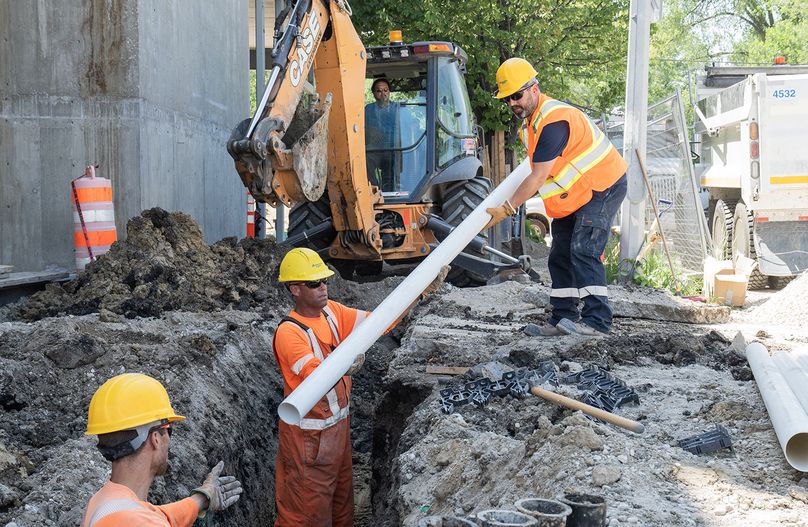
Steve Shepit, Kevin Courchaine and Scott Wilkinson at the Osborne Terraces project.
Enlarge image: Three Manitoba Hydro employees do excavation work at Osborne Terraces.
Up next, we’ll turn two pipes toward the south at the end of the back lane, and then stub off four pipes for potential future use. Once that’s finished, we will put up a transformer and six cables from the manhole to that transformer. Three cables are spare in case something happens to the other ones.
Manitoba Hydro could have just installed the feeder and alternate feeder off the current duct bank going down Osborne, but since we were already doing excavation work on Osborne and Gertrude for this project, we installed a duct bank toward Gertrude with six feeders. This way, Osborne Terraces could have two, leaving the other four for future customers.
“With effective planning, in the future, if we have a service request in that area, we don’t have to cut up the street again and close down lanes,” said construction community liaison Craig Sambrooke.
It takes good communication and collaboration to ensure getting a new building power goes smoothly.
“Adam has great attention to detail, and he has a very good project team assembled,” said Justin. “He’s easy to communicate with. Anytime I’ve ever asked for information, I receive it quickly.”
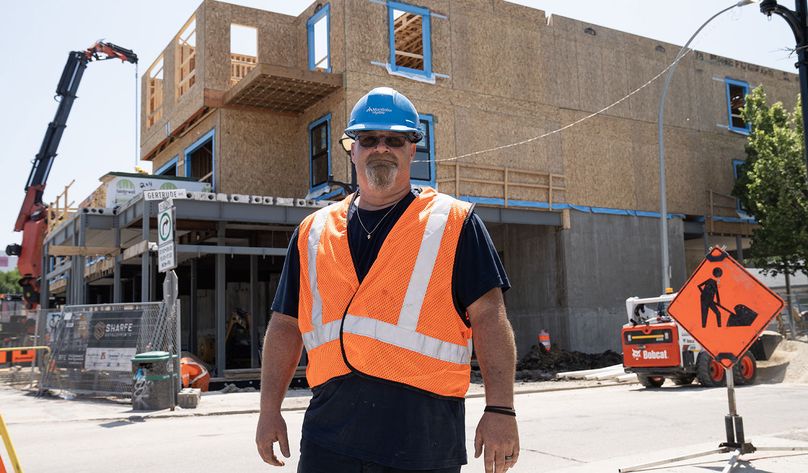
“I enjoy this type of work. I guess you can say I have the best of both worlds working inside and outside,” said Paul Matthews, one of the supervisors. “I like the interaction of crew members and customers, as well as seeing the job from start to finish — most people involved with our projects don’t get to see that.”
We needed to relocate some of the poles in the back lane because of where Osborne Terraces’ car ramps would be placed. A challenge was that the existing pole line was anchored by a trolley pole, the older model. These are so old that we can no longer ensure their integrity, so we now have to anchor the poles to new standards. We added new ones and changed everything over, and at this point it’s just a matter of removing the old ones after Bell MTS has also moved their lines to the new ones.
“I enjoy doing this kind of system improvement work to fix and upgrade the old infrastructure,” said Scott.
By doing improvement work while new buildings are going up, we can make improvements to the neighbourhood while providing developers what they need.
“What I really appreciated about Hydro was they weren’t telling me, ‘you have to do this, sorry, no, you can’t do anything else,’” said Adam. “They were all there working with me to find solutions that we could both be happy with.
“I’ve previously worked with Joanna Hnatishin, and Mike Pagtakhan, who were both amazing — and now Justin Morris, who went above and beyond. I could not be happier.”
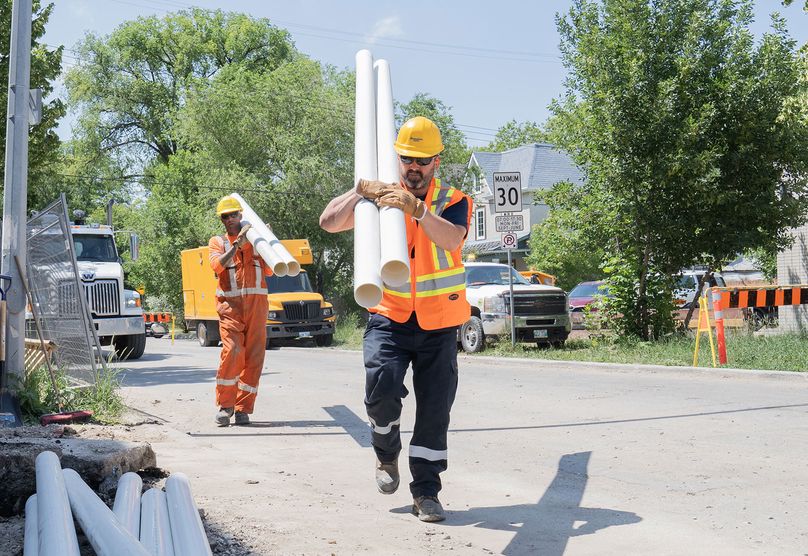
Scott Wilkinson and Kevin Courchaine at the Osborne Terraces project.
Enlarge image: Two Manitoba Hydro workers carry pipes at the work site.
According to Justin, a key part of his role as an ESA is to understand the developer’s needs and ensure our infrastructure can provide what they’re looking for.
“That’s something I’ve noticed with most developers, if not all: they’re eager to work with us to make sure we make the project as seamless as possible to provide them quick services,” said Justin. “Most people are understanding, and they always want to make sure we’re all in it together to get to the same endpoint.”
And when the endpoint is building new housing, new businesses, or improving the reliability of a densely populated area, everyone wins. A lot of people need to be involved when a new building goes up, but none of the work can start until Energy Services has been involved.
So, yes — you can’t just plop a building down anywhere. An ESA has to be there first.
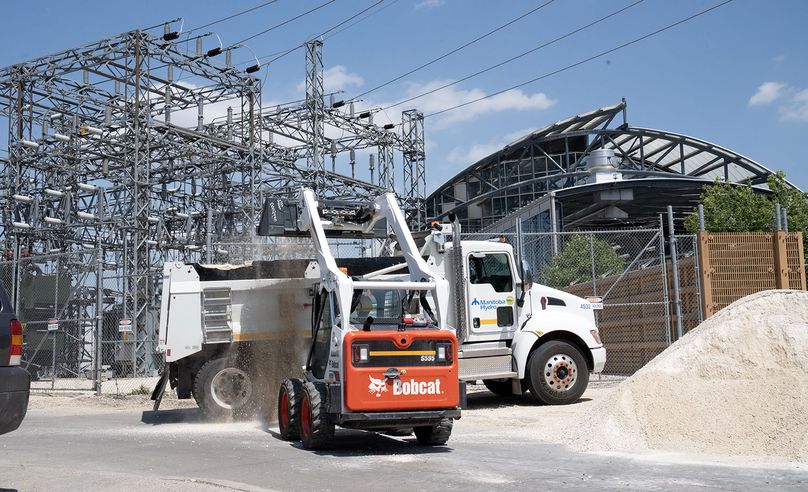
Loadings site near Osborne Terraces.

